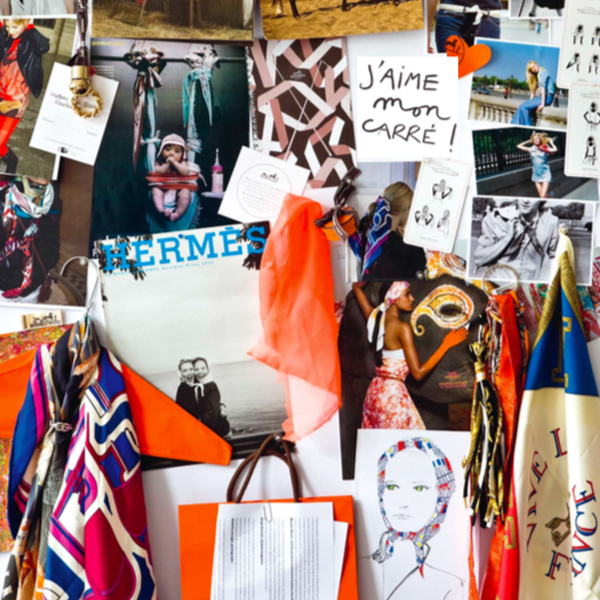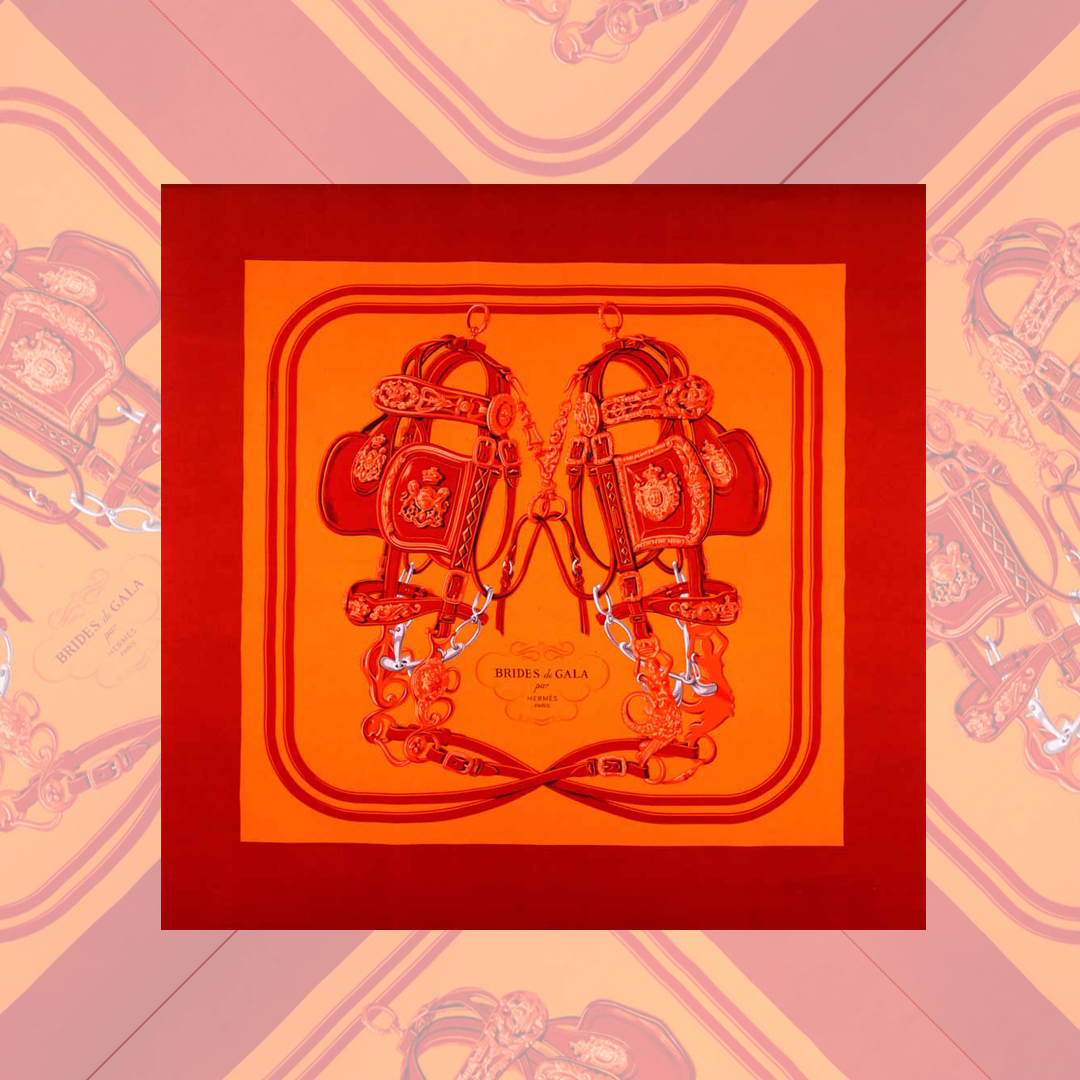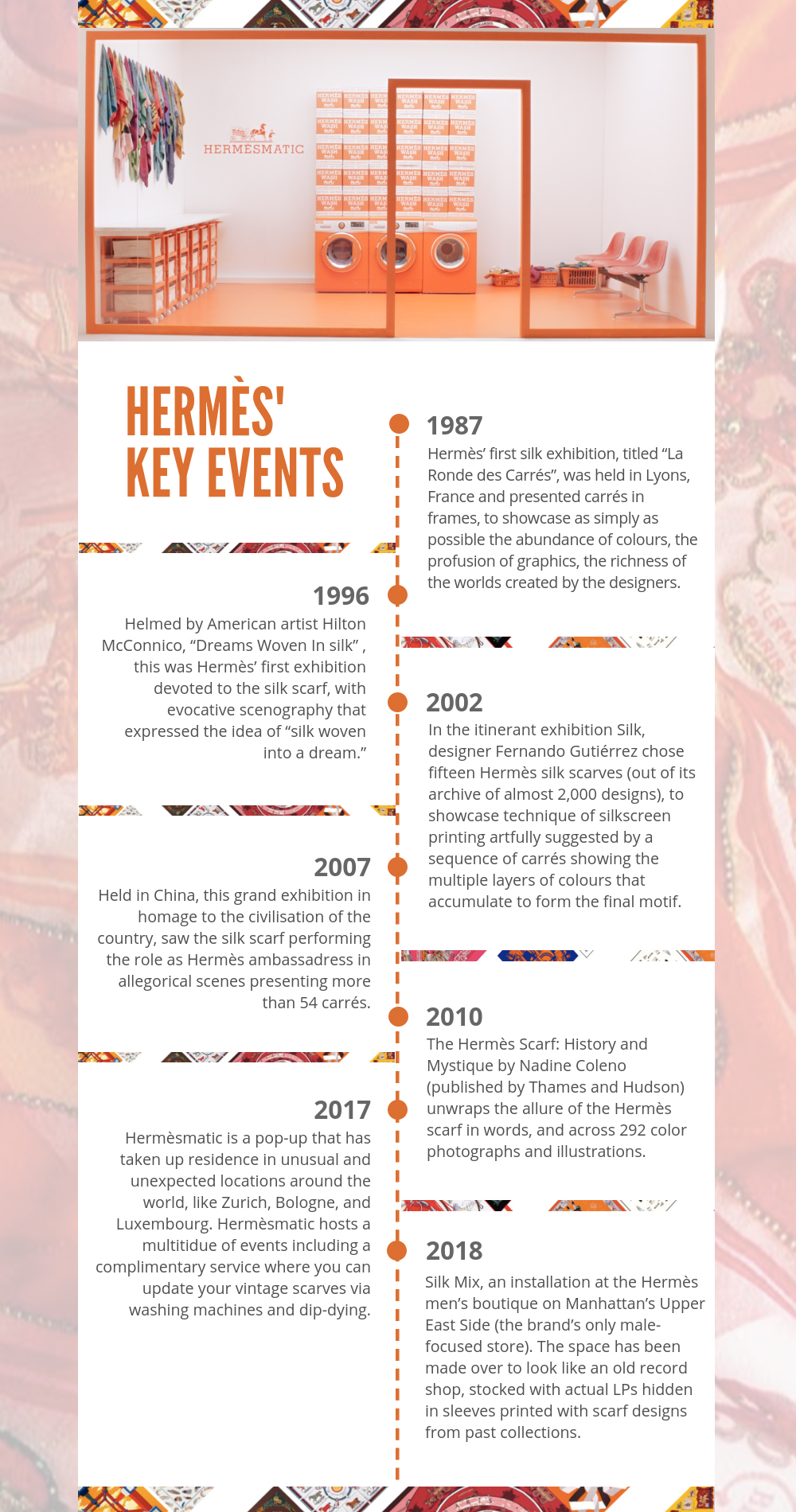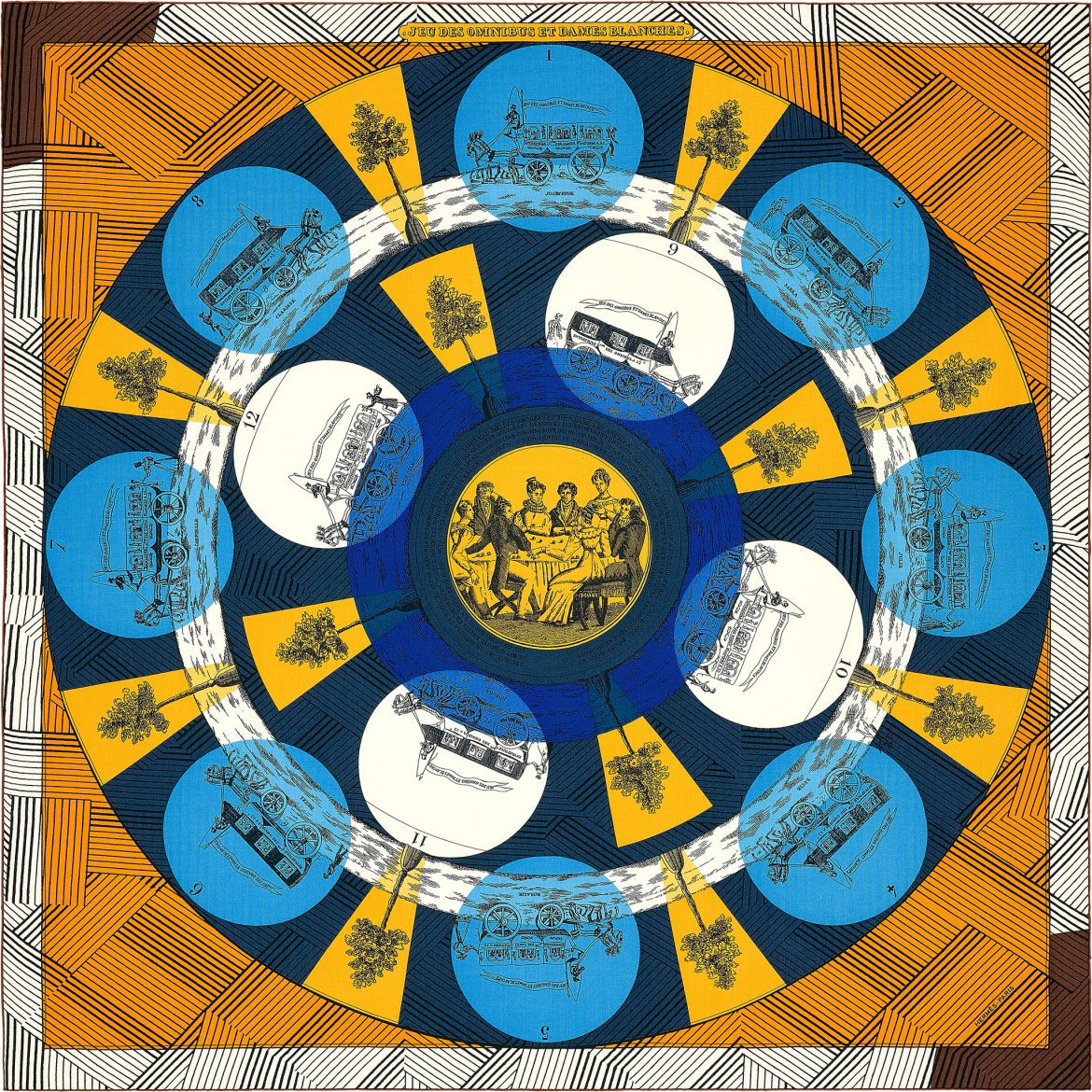Lightweight, lustrous and oh-so-lustworthy, Hermès silk scarves marry the French maison’s history with art, culture, and fashion.
How it all began:
To mark the centennial of Hermès, which started off in 1837 as a maker of luxury bridles and harnesses, Robert Dumas, a member of the Hermès family, released Hermès’ very first scarf in 1937, the very same year he set up a dedicated silk factory in Lyons, France.
The square carré (that’s French for “scarf”) weighed 79 grammes, and was made of Brazilian silk woven from 300 mulberry moth cocoons; such silk was said to be twice as strong as other available alternatives at the time.
Featuring a woodblock print designed by Robert Dumas himself, and christened “Jeu Des Omnibus et Dames Blanches”, it featured a group of men and women playing an 1800s board game, and was captioned cheekily with the phrase “a good player never loses his temper”.
Surrounding the central image were motifs of horse-drawn carriages called omnibuses, which alluded to Hermès’ equestrian roots, and which went on to become a classic Hermès symbol.
The sell-out success of the first scarf led to Hermès releasing two silk scarf collections a year; famous fans such as Queen Elizabeth, Audrey Hepburn, Jackie Onassis, Grace Kelly, Sharon Stone and Madonna ensured that Hermès scarves continue to flutter out of its stores at a rate of one every 25 seconds.
From the beginning, the Hermès carré was imagined as an object, and not as an accessory… It is an object perfectly composed and autonomous, which can suffice on its own. My grandfather was fascinated by the rigour imposed by printing on silk, and he immediately addressed the creation of his motifs through composition. He therefore accorded great importance to the design, refusing to accept approximation in the representations of animals, objects and details, and he ended up with a very expressive printed style, even when he was not the originator of the design.
– Hermès’ artistic director Pierre-Alexis Dumas (grandson of Robert Dumas)
Indeed, way before artist-brand collabs became as ubiquitous as they are today, Hermès had already co-opted artists such as Hugo Grygkar, who produced over 100 scarf designs between joining Hermès in the late 30s, until his death in 1959 — he also designed movie posters and did illustrations for French Vogue.

It was perhaps fitting that Bali Barret, deputy artistic director of Women’s Universe at Hermès, first joined the heritage house in 2003 after Pierre Alexis Dumas had commissioned her to design the iconic Crazy Carré scarf.
Part of her job involves sifting through hundreds of artworks submitted by about 50 different illustrators from all around the world, in her search potential new Hermès scarf designs.
Once a design is approved, it then takes a studio of about 20 freelance designers 10 months for a final pattern to be created and approved.
Colour testing requires another 3 months, and the entire process for each scarf (which features an average of 30 colours), from design, concept, engraving and printing, and hand-finishing, can take at least two years.
Since its inception, the house has released more than 2,000 designs, spanning anything from horsey motifs, flora, fauna, abstract splotches, geometrics, and even Red Indians.
Key pieces:
Jeu des Omnibuses et Dames Blanches: The inaugural 1937 Hermès scarf design. Enough said.
Brides de Gala, by Hugo Grygkar: Released in 1957 and considered the most iconic Hermès scarf design, the image of two bridles placed opposite each other is a testament to the house’s first vocation, as a saddler and harness-maker; to its love of beautiful, practical and durable objects, and to the importance of a title whose succinct ring evokes (in Jean-Louis Dumas’s words) “dazzling ceremonial regalia”.
It has since seen more than 20 reissues in different colourways, with some interpretations featuring florals, polka dots or stripes.
Feux D’Artifices: Issued in 1987, this rare collector’s piece was created for Hermès’ 150th anniversary and depicts a fire juggler on horseback with fireworks in the background.

Pierres D’Orient et d’Occident: First issued in 1988, this Pierres D’orient Et D’occident scarf by Zoé Pauwels set in grey features an ornate image of colorful birds surrounded by a floral design.
Daimyo Princes du Soleil Levant: At first glance, this 1990 design by Francoise Faconnet is richly baroque, but upon closer inspection, you’ll notice its design comprises overlapping Samurai swords, accented with shogun crests.
The most iconic Hermès scarves vibrantly express the Maison’s artistry and craftsmanship with the finest silk over the years, and likewise, Hermès’ soulful scarf-related events are vivid flights of fancy designed to capture the public’s imagination.
And we mean events inspired by the madness of throwing a bunch of wildly clashing prints onto the same scarf (which is basically the idea behind Hermès’ Crazy Carré scarf collection); eagerly-awaited large-scale “wild silk parties” held annually at different major cities around the world such as Hong Kong, Dubai, Madrid, Shanghai and London. Think copious champagne, models dressed as birds, colourful rooms in maze-like settings, loads of installations decked out in Hermès silk prints, can can dancers, fortune tellers and in general, all things fab, mad and opulent. The Maison continues to surprise, as they keep us enthralled with their game plan.
So while we walk you through some of the Maison’s key events through the years, we invite you to watch this space as we update you soon enough about the exciting event headed our way (yes, here in Singapore!) this October.

All images courtesy of Hermès.
Related links:
Hermès Carré Club: Be There or Be Square
8 Chic and Simple Ways to Wear a Scarf



